Ben Carter
A neuroscientist trying to figure out how the brain does it all. I use MRI and data science methods to study neurophysiology and structure. Currently leading a team of undergraduates in a novel study.
Grab a brain model. Find the cranial nerves on the model. Point to them. State their function, signs and laterality (ipsilateral, bilateral and contralateral).
Navigate to Washington brain atlas sections. Can you find the nerves and their nuclei?
| Nerve/Nucleus | Function | Signs (I/B/C) |
|---|---|---|
| Oculomotor (CN III) | Superior levator, superior rectus, medial rectus, inferior rectus and inferior oblique eye muscles | Ipsilateral Ptosis (drooping eye lid) Mydriasis (dilated pupil) Opthalmoplegia (paralysis of eye muscles) Down & out eye |
| Trochlear (CN IV) | Superior oblique eye muscle | Contralateral to nuclues Ipsilateral to nerve Extorsion (hard to look down and in) Unconscious head tilt |
| Trigeminal (CN V) | Muscles of mastication Lateral pterygoid Medial pterygoid Masseter |
Ipsilateral Muscular atrophy Jaw deviation towards side of lesion Difficulty chewing |
| Abducens (CN VI) | Lateral rectus muscle | Ipsilateral Esotropia (cannot abduct eye) |
| Facial (CN VII) | Muscles of facial expression | Ipsilateral Paralysis of facial expression muscles Lack of salivation, lacrimation Hyperacusis |
| Glossopharyngeal (CN IX), Vagus (CN X), Accessrory (CN XI) | Palatal, pharyngeal, and laryngeal muscles, accesory spinal muscles | Ipsilateral Vocal muscle paralysis Dysphagia Contralateral deivation of uvula |
| Hypoglossal (CN XII) | Tongue muscles | Ipsilateral Atrophy Ipsilateral deviation of the tongue |
Give the name, function and symptoms of the following structures.
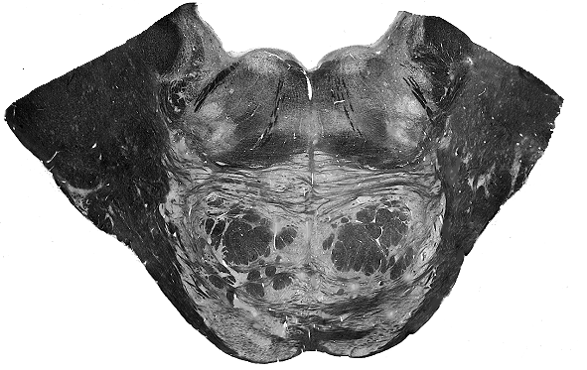


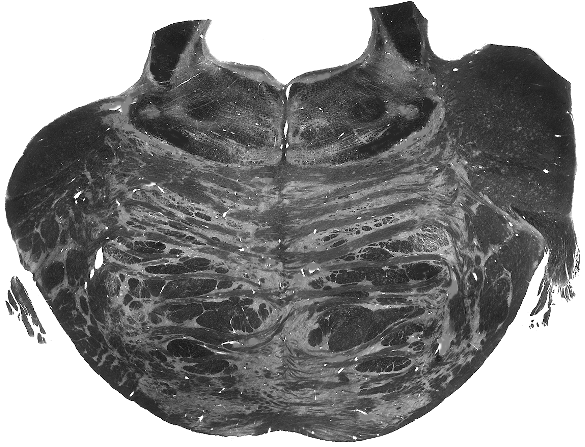
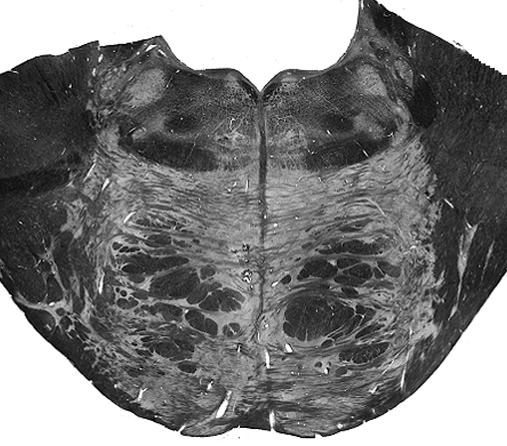
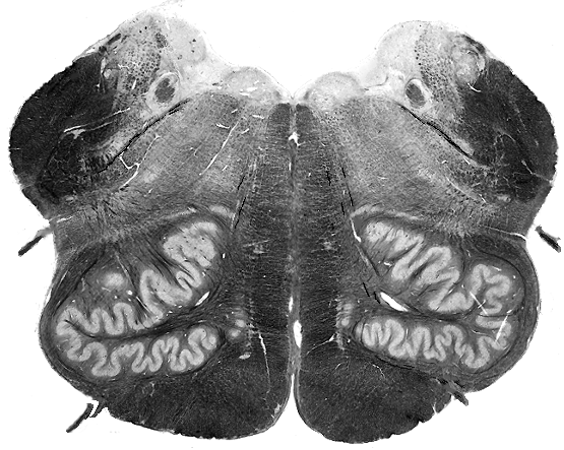
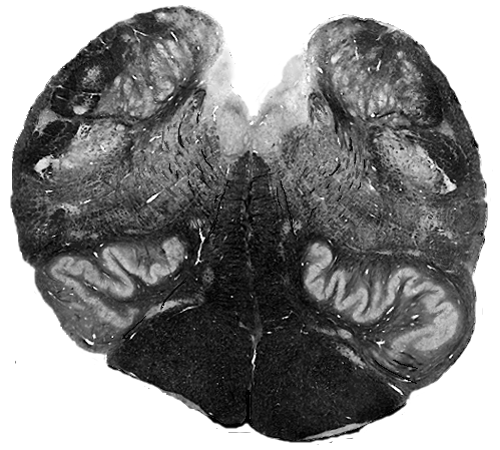
This section came from L2 of the spinal cord.
What symptoms generally would you expect to see if there was a lesion in this region of the spinal cord?
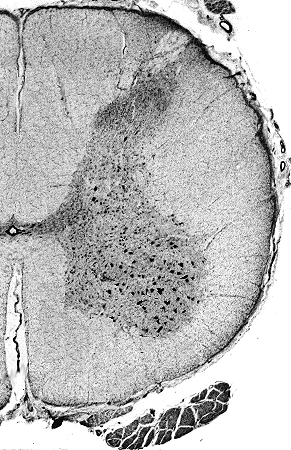

Draw a diagram of the Myotactic reflex arc.

Draw a diagram of the inverse myotactic reflex arc (Golgi tendon reflex).
In BrainStorm, select gross dissections. Starting in the dorsal orientation, find the following structures:
Can you do it in ventral, midsagittal or sagittal orientations?
Instructions:
The following questions are multiple choice. The answer options will be hidden at first. If possible, try to answer the question without seeing the options first.
What is the primary projection fiber system of the brain?
An individual has sustained a lesion to their right calcarine sulcus. What deficits should be present?
A lesion within _______ is characterized by ______ .
________ borders the fusiform gyrus and the _______ .
By Ben Carter
Review of Cerebral White Matter and the Cerebral Cortex and Preview of Lower Motor Neurons for Neuro 360
A neuroscientist trying to figure out how the brain does it all. I use MRI and data science methods to study neurophysiology and structure. Currently leading a team of undergraduates in a novel study.